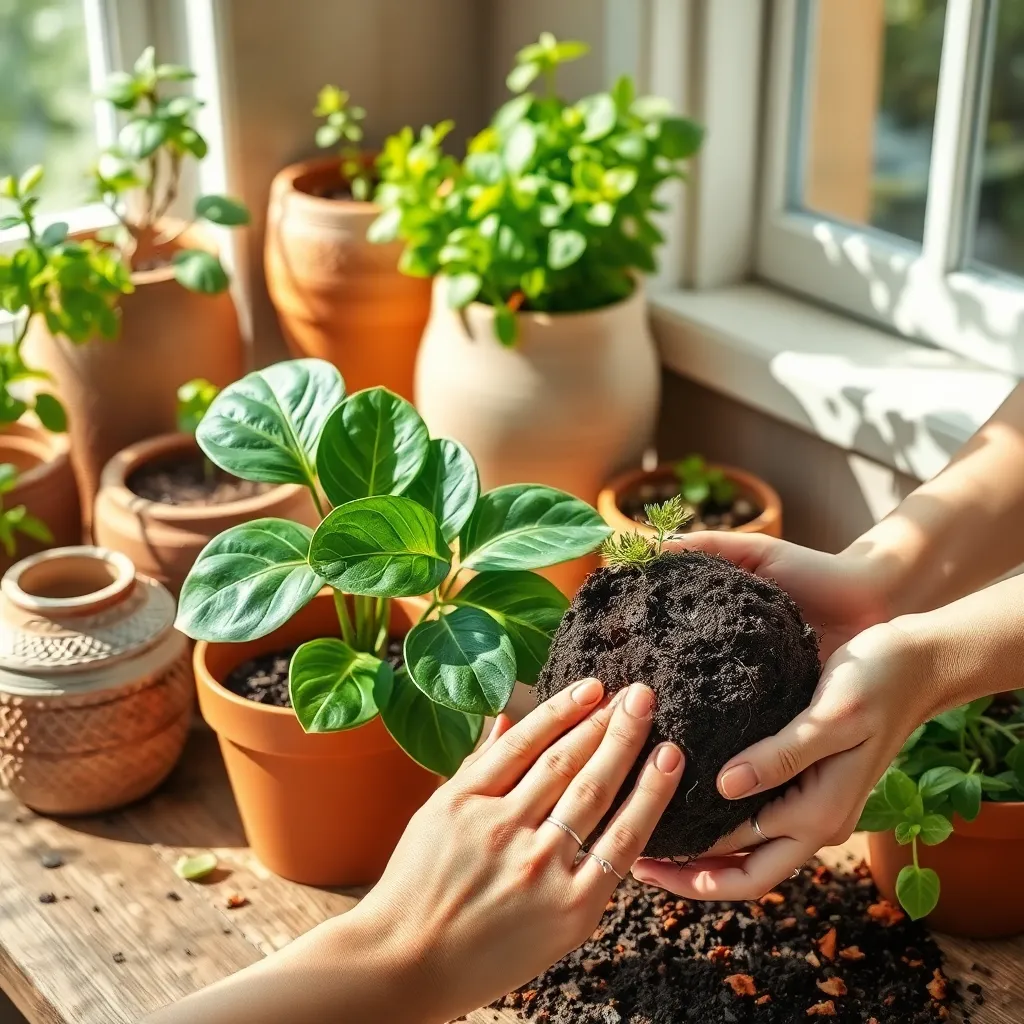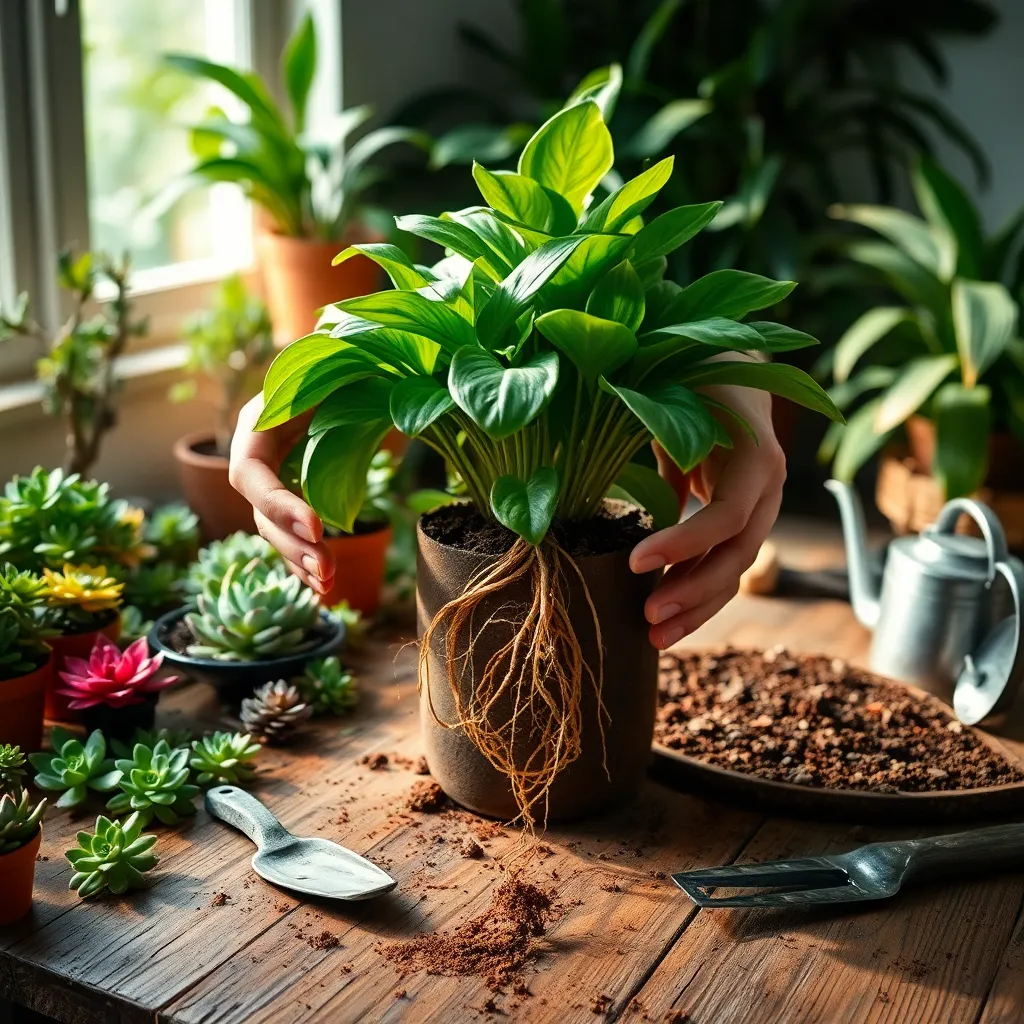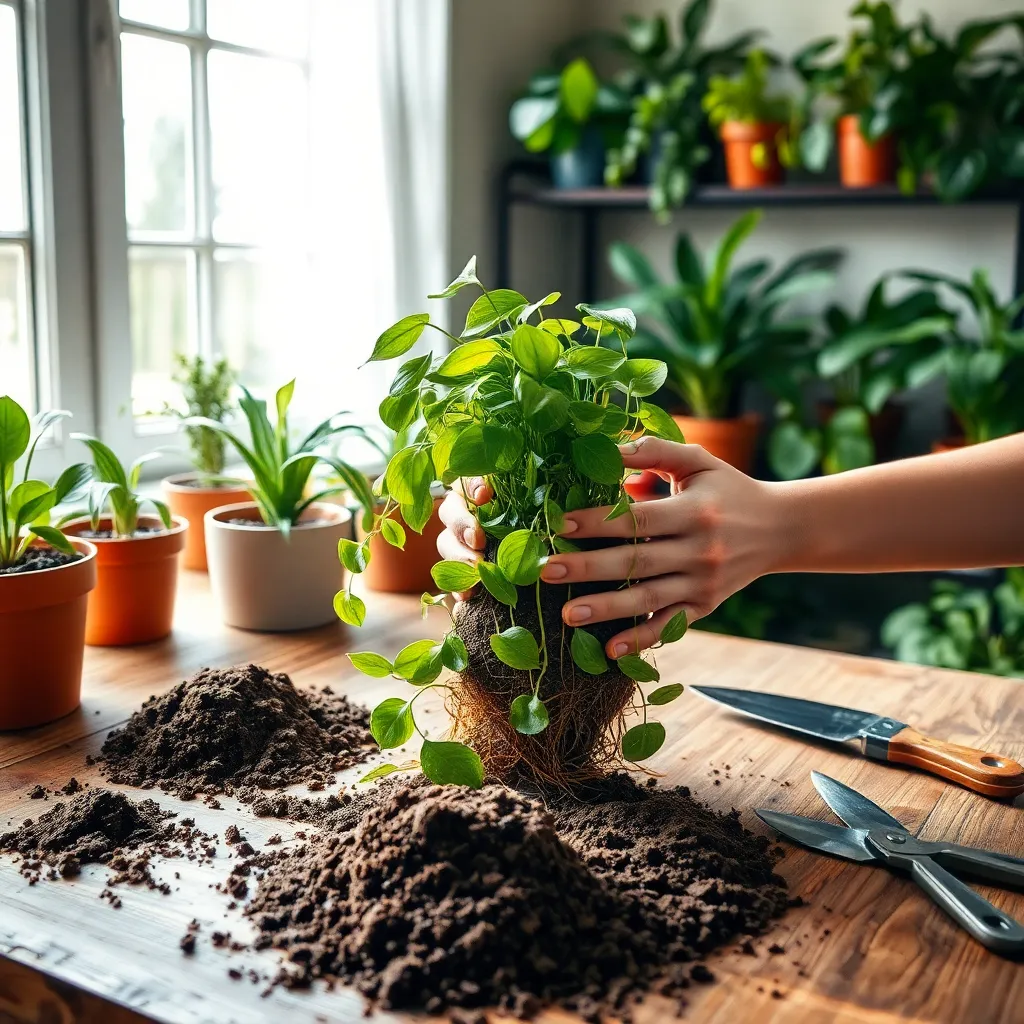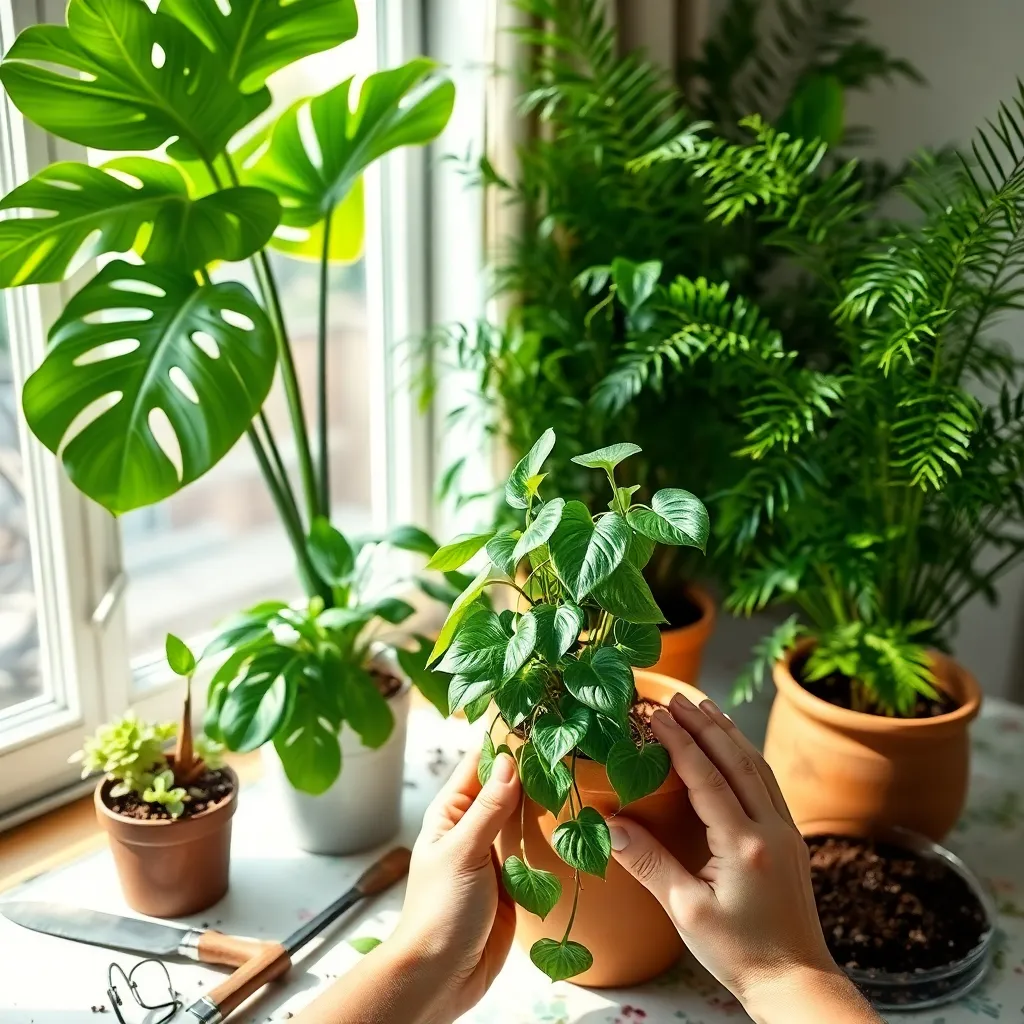Repotting indoor plants is an art that blends care with precision, and it’s a skill every gardener, novice or seasoned, can master with a bit of guidance. As you embark on this journey, you’ll discover that the roots are the heart of your plant, requiring gentle handling to thrive in their new home.
Understanding how to repot without damaging these delicate roots is crucial for the health and growth of your indoor garden. Whether you’re nurturing a lush monstera or a petite succulent, this article will equip you with practical techniques to ensure a seamless transition for your plants.
Throughout this guide, you’ll learn to identify the perfect timing for repotting, select the right pot and soil, and employ techniques that minimize stress on your plants. By the end, you’ll not only feel confident in your ability to repot with care but also gain a deeper appreciation for the resilience and beauty of your indoor companions.
Preparing Your Indoor Plants

Before repotting, it’s crucial to prepare your indoor plants to minimize stress. Begin by gently watering them a day or two in advance, which will help to loosen the soil and make root extraction easier.
Examine the plant for any signs of distress like yellowing leaves or pests. Address these issues by trimming away damaged foliage and treating pests with an appropriate insecticidal soap.
It’s also beneficial to assess the plant’s root system to ensure healthy growth in its new pot. Carefully remove the plant from its current container to inspect for root rot or overcrowding, trimming any unhealthy roots with sterilized scissors.
While preparing, gather the necessary materials such as a new pot that’s one size larger and high-quality potting mix suited to your plant’s needs. For most indoor plants, a mix containing peat, perlite, and vermiculite provides excellent drainage and aeration.
Choosing the Perfect Pot

Choosing the right pot for your indoor plants is crucial for their health and growth. It’s essential to ensure the pot has adequate drainage holes to prevent waterlogging, which can lead to root rot.
Consider the size of your plant and its root system when selecting a pot. A pot that’s too small can restrict growth, while one that’s too large may retain excess moisture, risking overwatering.
Material matters when picking a pot, as it impacts moisture retention and temperature regulation. Terra cotta pots are excellent for plants that prefer drier soil, as they allow moisture to evaporate quickly.
For those who enjoy a more decorative approach, glazed ceramic pots offer a variety of colors but tend to retain moisture longer. Be sure to adjust your watering schedule accordingly to prevent root damage.
Removing Plants Safely

Before attempting to remove a plant from its current pot, it’s essential to prepare the plant by watering it thoroughly a day beforehand. This ensures that the root ball is moist and more pliable, reducing the risk of root breakage during extraction.
To begin the removal process, gently tilt the pot and tap its sides to loosen the soil. If the plant remains stubbornly stuck, use a dull knife or a potting scoop to carefully loosen the edges, running it around the inner rim of the pot.
For more delicate plants, such as orchids or succulents, exercise extra caution by supporting the plant’s base with one hand while gently coaxing the roots free with the other. This technique minimizes stress on the plant and helps maintain the integrity of its root system.
If roots are heavily bound, they can be gently teased apart using your fingers or a clean, sharp tool. Be sure to work slowly and methodically to avoid damaging the roots, which are crucial for the plant’s uptake of water and nutrients.
Handling Roots with Care

When repotting, it’s essential to handle roots with care to ensure the plant’s continued health. Begin by gently loosening the root ball with your fingers, taking care not to break or tear the roots.
Next, inspect the roots and trim any that are dead or rotting using clean, sharp scissors. This helps prevent disease and encourages the plant to redirect energy to healthy root growth.
For plants with tightly bound roots, you might need to tease them apart slightly to encourage spreading in the new pot. Use a gentle touch, as excessive force can cause stress and damage to the plant.
Consider the potting mix when repotting, as this can significantly impact root health. Opt for a mix that matches your plant’s needs; for instance, a cactus might prefer a sandy, well-draining soil, while a fern would thrive in a more moisture-retentive mixture.
Water the plant thoroughly after repotting to settle the soil and remove air pockets that might harm the roots. Ensure the pot has adequate drainage to prevent waterlogged conditions that can lead to root rot.
Settling Plants in New Home

When settling plants into their new home, it’s crucial to position them at the right depth in their pot. Ensure the root ball is level with the top of the soil to allow proper air circulation and prevent rot.
Gently fill in around the roots with fresh potting mix, using your fingers to lightly compact the soil. This helps eliminate air pockets that can lead to root desiccation, ensuring that the plant is well-supported and stable.
After repotting, water the plant thoroughly to help the soil settle and eliminate any remaining air pockets. For most indoor plants, it’s essential to use a potting mix that retains moisture while providing adequate drainage, such as a mix containing peat moss and perlite.
Place the newly potted plant in a location with similar light conditions to its previous spot to reduce transplant shock. Gradually introduce it to a new location over a week if brighter light is desired, allowing the plant to acclimate to the change without stress.
Monitor watering needs closely in the first few weeks after repotting, as the plant will need time to adjust and establish its roots. Be mindful not to overwater; wait until the top inch of soil is dry before watering again to prevent root rot.
Conclusion: Growing Success with These Plants
As we’ve explored in the article, nurturing relationships, much like repotting indoor plants, requires careful attention and thoughtful action. First, understanding the emotional needs of your partner is akin to knowing the soil requirements of your plant. Second, maintaining open communication ensures roots of connection remain undamaged. Third, recognizing when change is necessary prevents stagnation. Fourth, providing space for growth fosters a healthy dynamic. Lastly, showing consistent care strengthens the bond over time.
Now, take a moment to reflect on which of these concepts most resonates with your current relationship and commit to implementing one actionable change today. Perhaps start by initiating a heartfelt conversation with your partner or planning a small gesture that shows appreciation.
We encourage you to save this article for future reference, as it can serve as a valuable guide when navigating the complexities of relationship growth. Simply bookmark it now to have these insights readily available whenever you need them.
Remember, successful relationships are built on ongoing effort and nurturing. By applying these principles, you’re well on your way to cultivating a thriving, resilient partnership. Here’s to your journey toward deeper connection and mutual understanding!

